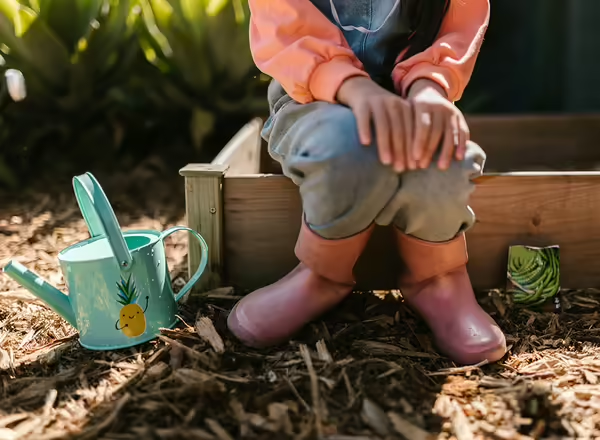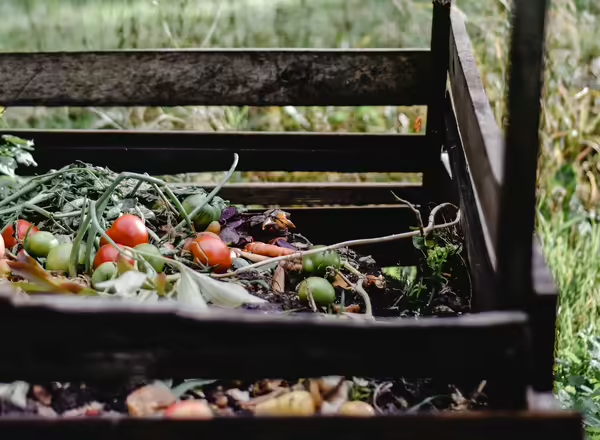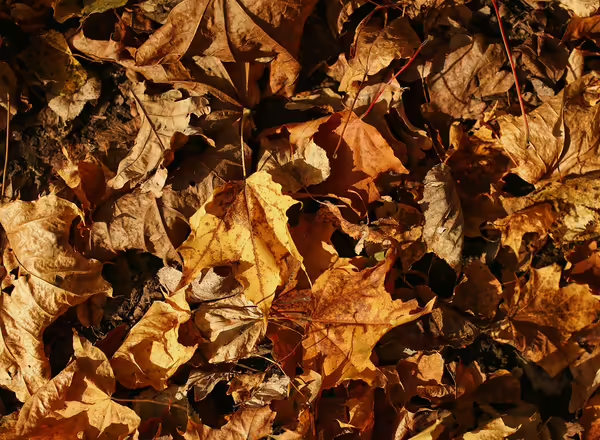
Learn About Soil
Check Your Soil
We can't have a garden without soil.
Check the site to determine if the soil is hard and dry. Are there things growing there now? If weeds are growing really well, probably vegetables and flowers will also. How's the worm population? If you have a lot of them, great; if not there are things you can do to invite them in.

Garden soil has some real important parts: minerals, organic matter (rotting plant and animal parts), air spaces and water. If these things are not in the right balance you might have soil that is too clay, too sandy, too dry, too wet, or too hard.
Good gardeners always take care of their soil, so before you start to plant think about what you can do to help your soil. What have you done for your soil lately? Learn more from our Extension Soil website.

One of the best things to do for just about all soils is to add things that keep it in good shape. These things are called soil conditioners and include manure, compost, peat moss, and leaves. All of the soil conditioners are put on top of the soil (about 2-3 inches deep) and then mixed into the soil.
Manure
If you can get it, animal manure from animals like cows, horses and sheep are great soil conditioners. It's best to use manure that is more than six months old. New or fresh manure might hurt your plants because it is too fresh or has not aged. Also, if you have a pet a home, don't use that manure for the garden! There are things in it that are not safe especially around vegetables that you pick and eat.

Compost is a mixture of garden scraps and kitchen vegetable scraps that rot and makes your soil better. Some gardeners make compost piles, and you might want to start one if you have room. If not, you can usually buy compost, or some towns have it available for free. Extension has a website devoted to composting basics.
A compost pile is built in layers like a fancy birthday cake. Start off with about 6-8 inches of garden scraps. Then sprinkle a handful of fertilizer on top. This helps feed the organisms that will break the scraps down. Add a two inch layer of soil. The soil gets organisms into the pile. Build up several layers. To speed up the decaying process, after several weeks turn the pile with a shovel to get air in the compost pile. Compost is ready when it is crumbly and has that "earthy" smell. It may take several months before compost is ready, but the wait will be well worth it and your garden will thank you with the best looking flowers and vegetables.

This is the brown spongy stuff sold in bags at the garden center. It might cost a little of your allowance to buy, but it does a good job of helping both clay and sandy soils. One little tip. Be sure that the peat is a little damp before mixing it into the soil. Dry peat acts like a duck's back and water just rolls off it. It is hard to wet it when it's mixed into the soil dry.

Leaves are a great bargain because they are free, and there are a lot of them in the fall! Sometimes it's best if the leaves are chopped up before mixing into the soil. Have an adult help you do this with a lawn mower. This will get you small leave chunks that are easier to mix in and rot faster. Leaves also help to invite worms to your garden.